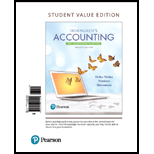
Acid-test Ratio: It is a ratio used to determine a company’s ability to pay back its current liabilities using only liquid assets that are current assets except the inventory and prepaid expenses. Also known as quick ratio, it is a part of
Inventory Turnover: It is a part of efficiency ratios used during the process of ratio analysis. It reflects the number of times a company’s inventory is converted into sale during a particular period. The cost of goods sold is divided by average inventory to get the value of inventory turnover.
Days’ Sales in Receivables: This ratio is calculated to know the number of days required to collect the payment for credit sales by a company. It is also called average collection period. It reflects the quality of the debtors or
Debt Ratio: It is the ratio between total assets of thG Company and the total liabilities. Debt ratio reflects the finance strategy of thG Company. It is used to evaluatG Company’s ability to pay its debts. Higher debt ratio implies the higher financial risk.
Earnings per Share: It is a mandatory term to be reported with the financials of a company in the annual report. It reflects the amount earned or lost on each outstanding common equity share. It is widely used to evaluate the performance of a business.
Price/Earnings Ratio: It depicts the relation of market price of a share to earnings per share of that company. The price/earnings ratio shows the market value of the amount invested to earn $1 by a company. It is major tool to be used by investors before the decisions related to investments in a company.
Dividend Payout: After the calculation of earnings per share, companies declare the amount to be paid to common shareholders out of those earnings. This portion of earnings per share declared to be paid as dividends is measure by dividend payout ratio. It is reflected as in percentage of earnings per share.
1.
a.
To Compute: The acid-test ratio of company A and G.
Use below formula to compute acid-test ratio:
For A Company:
b.
To Compute: The inventory turnover of company A and G.
Use below formula to compute inventory turnover:
For A Company:
Given,
► Cost of goods sold is $209,000.
► Average merchandise inventory is $72,500 (working note).
Substitute $209,000 for cost of goods sold and $72,500 for average merchandise inventory in the above formula:
Inventory Turnover of A company is 2.88 times.
Working note:
For G Company:
Given,
► Cost of goods sold is $258,000.
► Average merchandise inventory is $95,500 (working note).
Substitute $258,000 for cost of goods sold and $95,500 for average merchandise inventory in the above formula:
Inventory Turnover of G Company is 2.70 times.
Working note:
c.
To Compute: The days’ sales in receivables of company A and G.
d.
To Compute: The debts ratio of company A and G.
e.
To Compute: The earnings per share of common equity of company A and G.
f.
To Compute: The price/earnings ratio of company A and G.
g.
To Compute: The dividend payout ratio of company A and G.
2.
To Decide: Which company’s stock is a better fit for investment?
Want to see the full answer?
Check out a sample textbook solution
Chapter 17 Solutions
Horngren's Accounting: The Managerial Chapters, Student Value Edition (12th Edition)

 AccountingAccountingISBN:9781337272094Author:WARREN, Carl S., Reeve, James M., Duchac, Jonathan E.Publisher:Cengage Learning,
AccountingAccountingISBN:9781337272094Author:WARREN, Carl S., Reeve, James M., Duchac, Jonathan E.Publisher:Cengage Learning, Accounting Information SystemsAccountingISBN:9781337619202Author:Hall, James A.Publisher:Cengage Learning,
Accounting Information SystemsAccountingISBN:9781337619202Author:Hall, James A.Publisher:Cengage Learning, Horngren's Cost Accounting: A Managerial Emphasis...AccountingISBN:9780134475585Author:Srikant M. Datar, Madhav V. RajanPublisher:PEARSON
Horngren's Cost Accounting: A Managerial Emphasis...AccountingISBN:9780134475585Author:Srikant M. Datar, Madhav V. RajanPublisher:PEARSON Intermediate AccountingAccountingISBN:9781259722660Author:J. David Spiceland, Mark W. Nelson, Wayne M ThomasPublisher:McGraw-Hill Education
Intermediate AccountingAccountingISBN:9781259722660Author:J. David Spiceland, Mark W. Nelson, Wayne M ThomasPublisher:McGraw-Hill Education Financial and Managerial AccountingAccountingISBN:9781259726705Author:John J Wild, Ken W. Shaw, Barbara Chiappetta Fundamental Accounting PrinciplesPublisher:McGraw-Hill Education
Financial and Managerial AccountingAccountingISBN:9781259726705Author:John J Wild, Ken W. Shaw, Barbara Chiappetta Fundamental Accounting PrinciplesPublisher:McGraw-Hill Education





